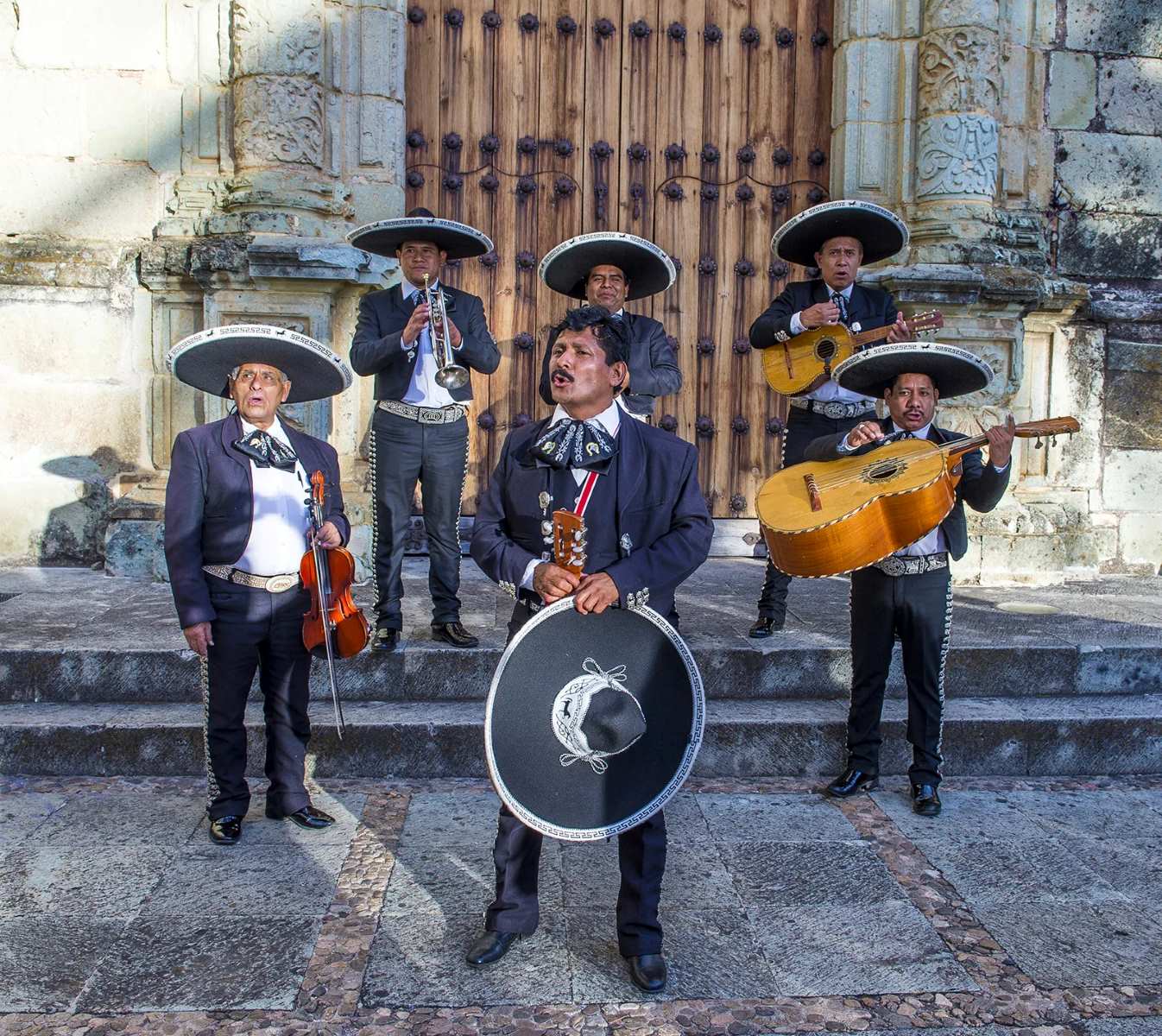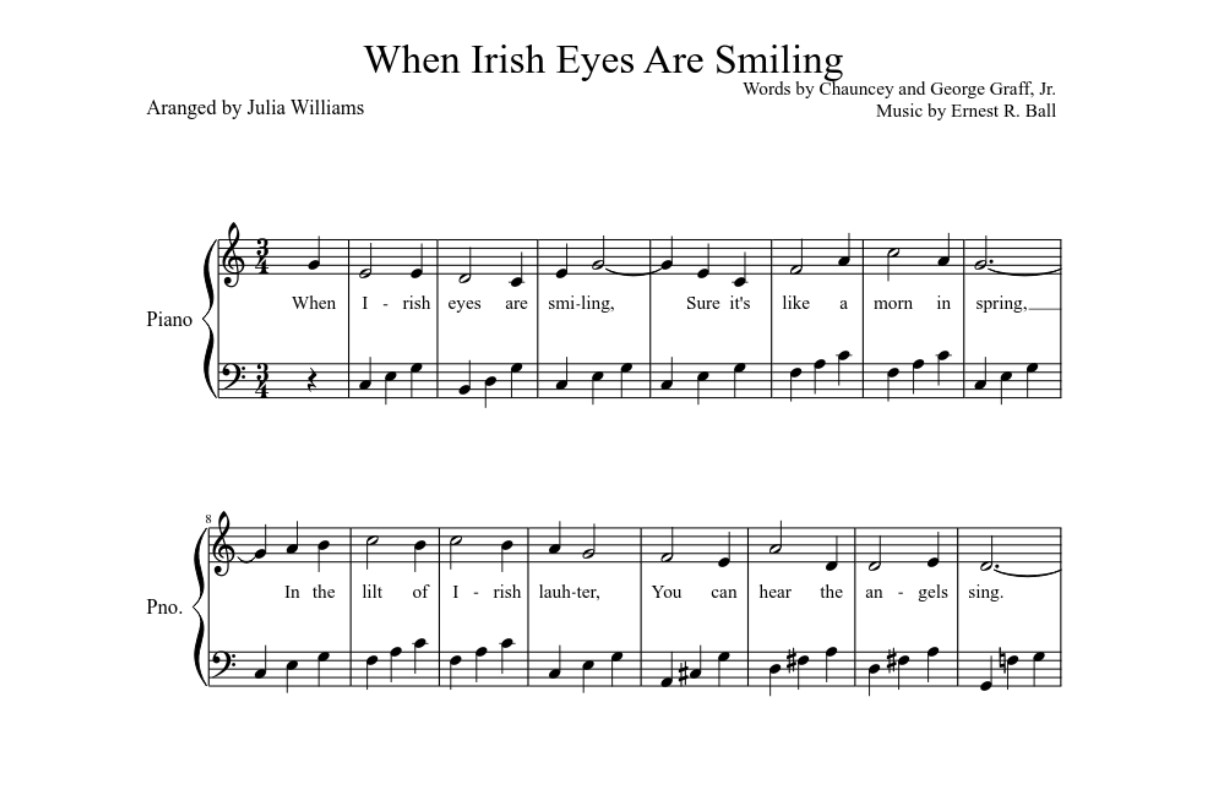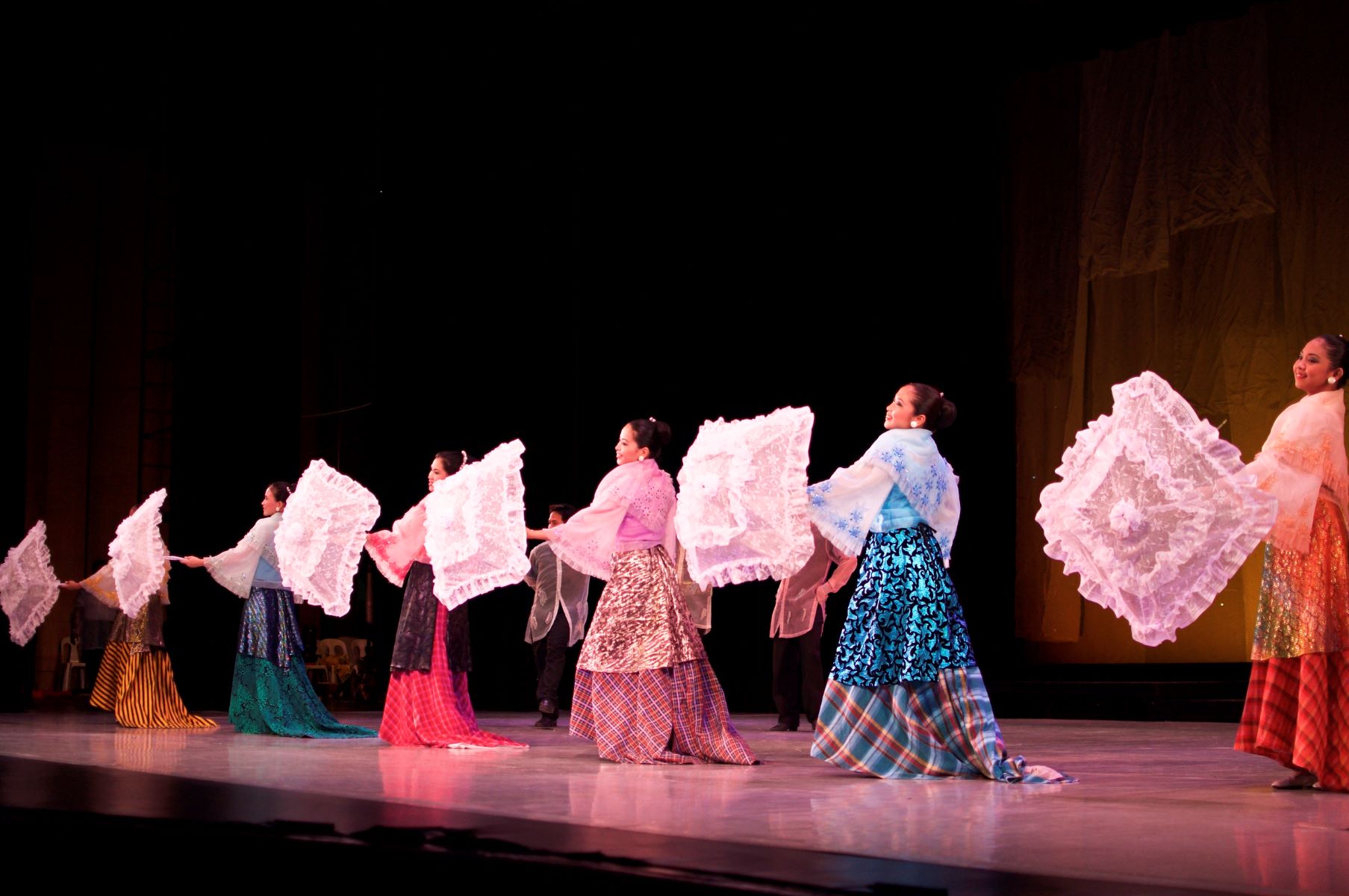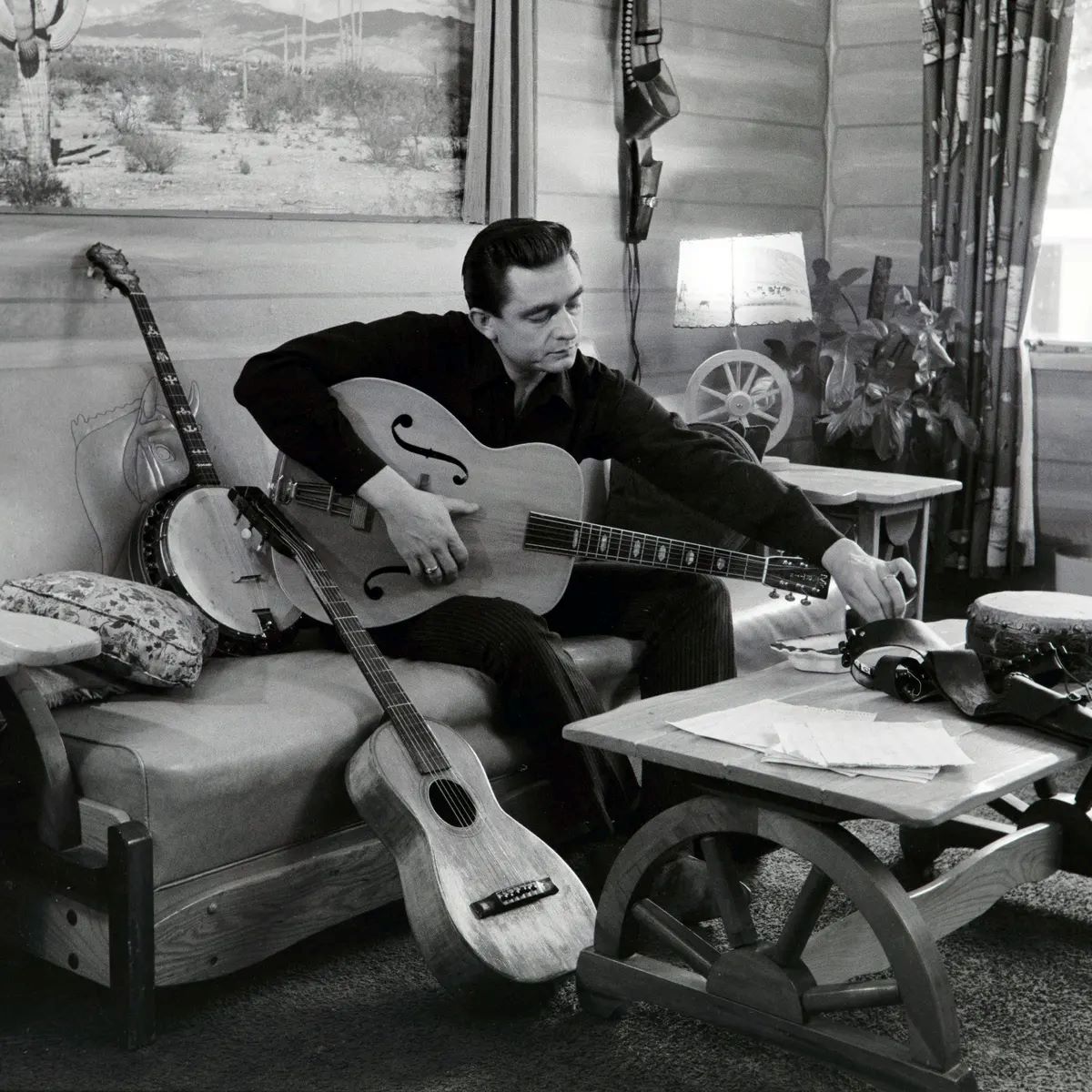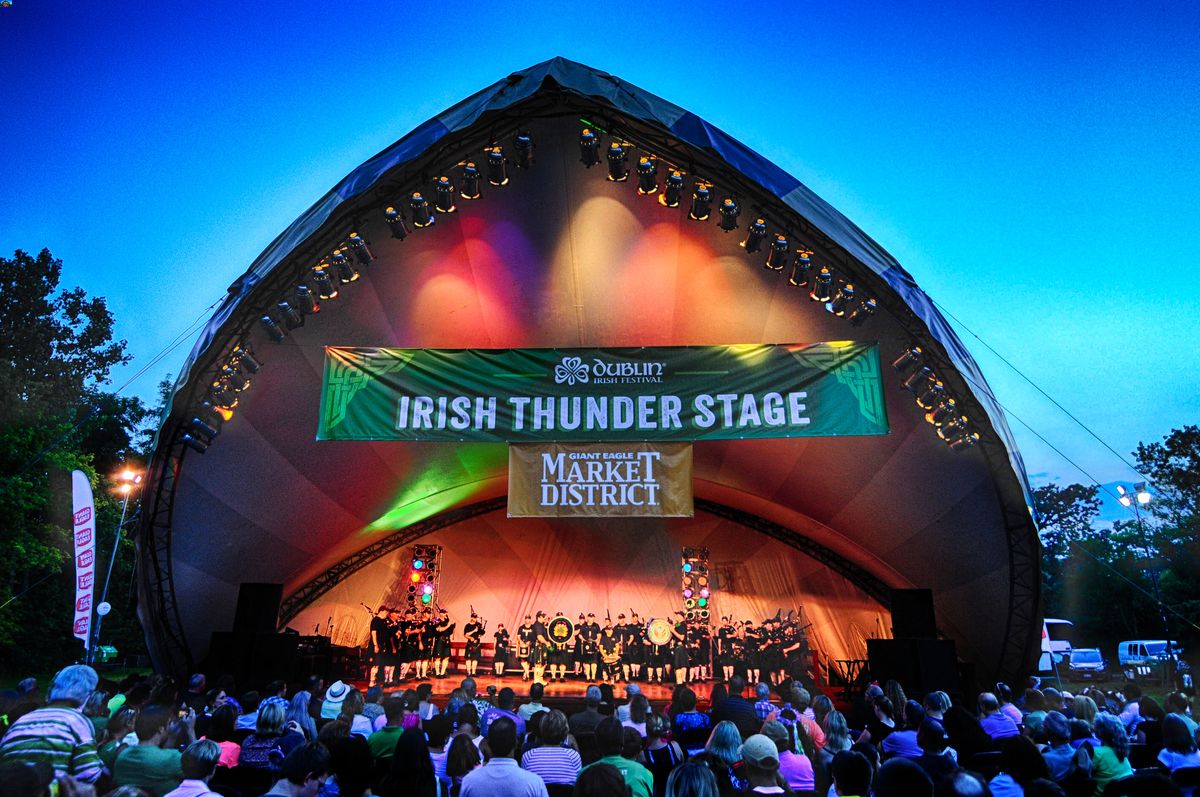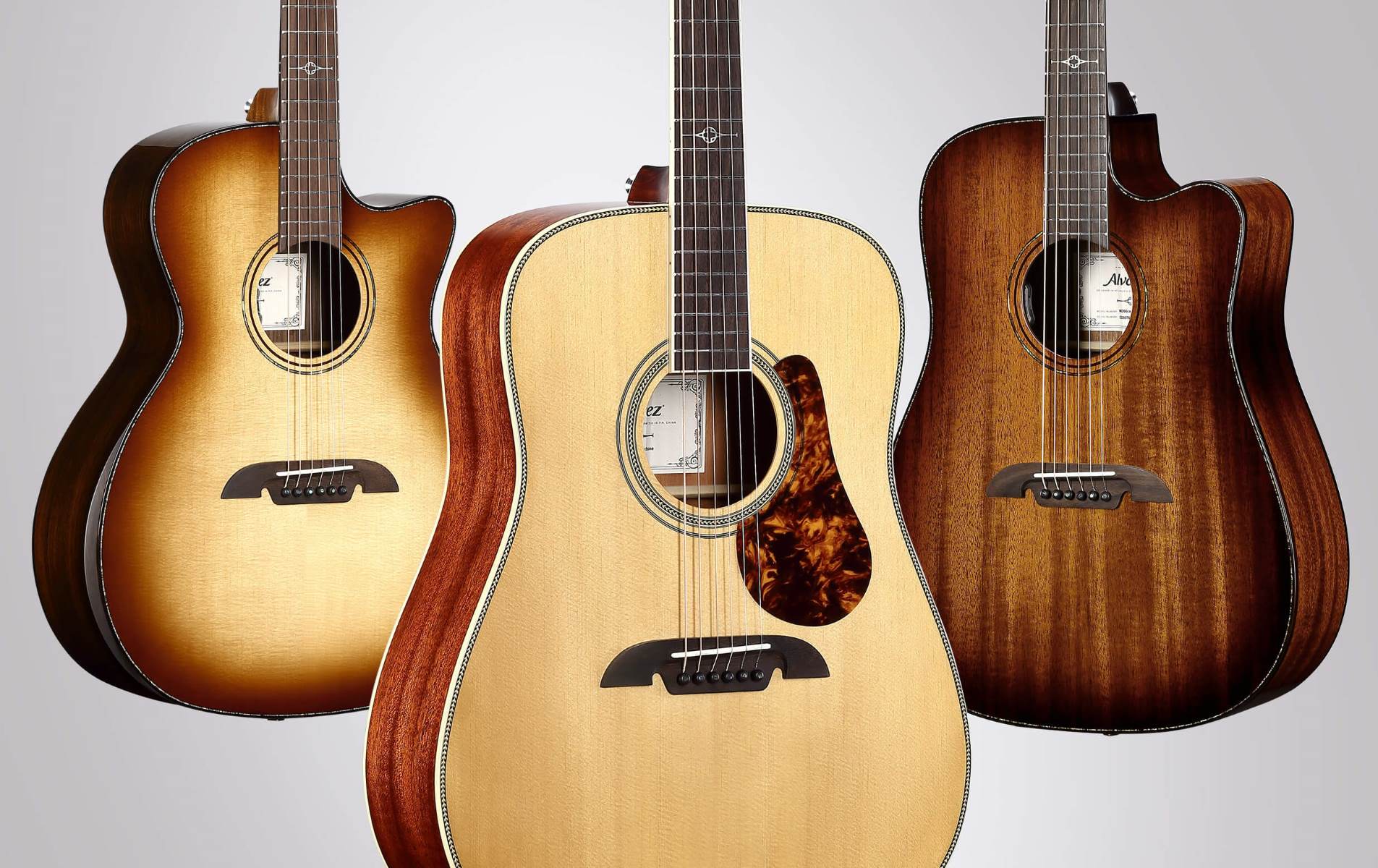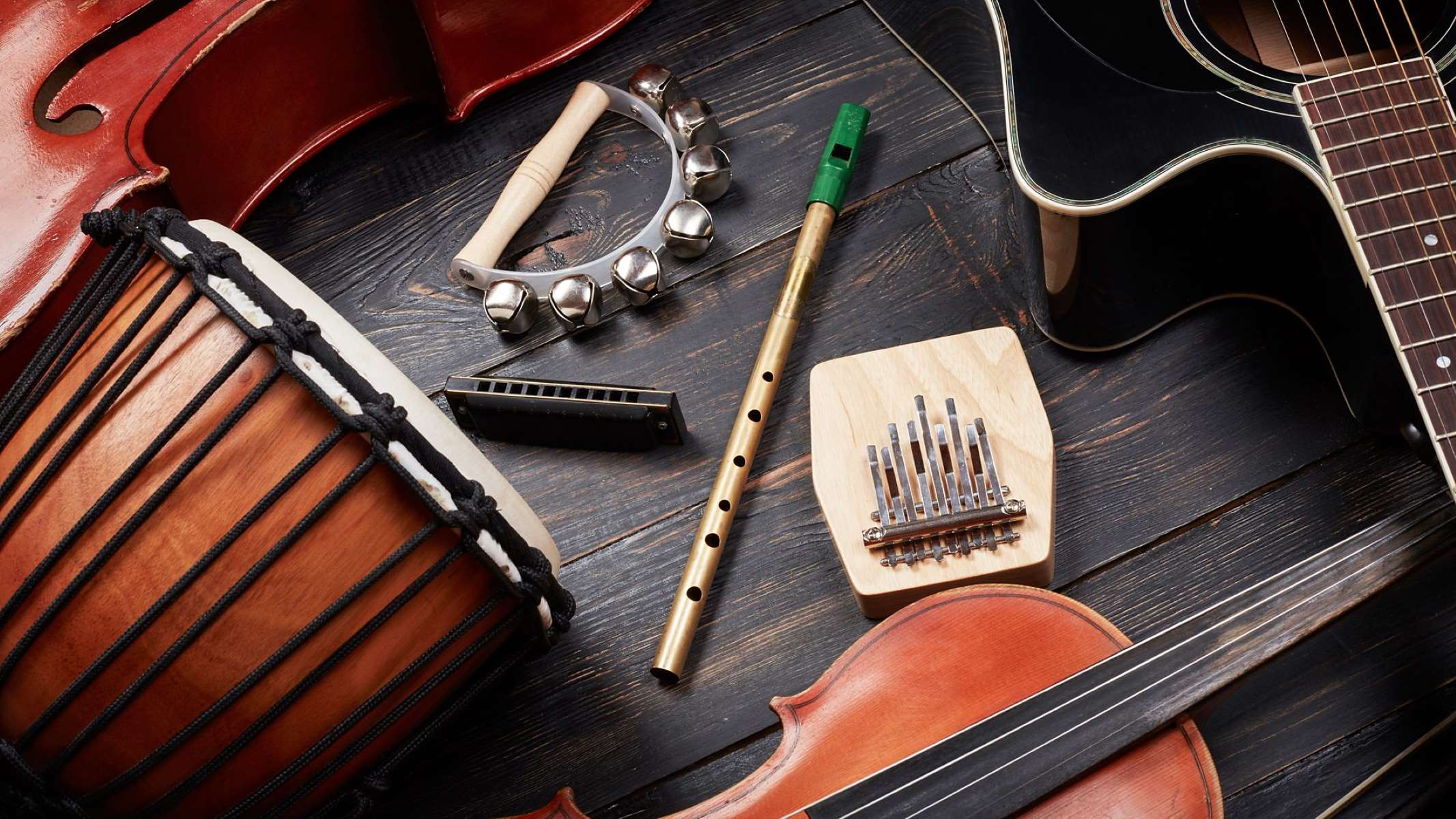

Folk
What Is Irish Folk Music
Modified: March 11, 2024
Discover the soulful melodies and rich traditions of Irish folk music. Immerse yourself in the captivating sounds of traditional instruments and heartfelt storytelling.
(Many of the links in this article redirect to a specific reviewed product. Your purchase of these products through affiliate links helps to generate commission for AudioLover.com, at no extra cost. Learn more)
Table of Contents
Introduction
Welcome to the enchanting world of Irish folk music! With its rich history and haunting melodies, Irish folk music has captured the hearts and souls of people around the globe. From lively jigs and reels to soul-stirring ballads, this genre has a mesmerizing quality that resonates with listeners of all backgrounds.
Irish folk music is deeply rooted in the traditions and culture of Ireland. It serves as a powerful medium to convey stories, emotions, and the essence of Irish identity. Whether you’re tapping your feet to the infectious rhythms or getting lost in the introspective lyrics, the music has an uncanny ability to transport you to the misty landscapes and timeless tales of the Emerald Isle.
Throughout its long history, Irish folk music has evolved and adapted, yet has managed to maintain its distinctive charm and authenticity. Passed down through generations, it has become an integral part of the Irish cultural heritage.
In this article, we’ll delve into the captivating world of Irish folk music, exploring its history, characteristics, instruments used, famous musicians, regional variations, influences on other genres, and its contemporary relevance. So, grab a cup of tea, sit back, and let’s embark on a musical journey through the heart of Ireland.
History of Irish Folk Music
The history of Irish folk music stretches back centuries, rooted in the ancient traditions and storytelling of the Celtic people. The music of Ireland has a deep connection with the land and its people, serving as a reflection of their struggles, joys, and sense of identity.
One of the earliest forms of Irish folk music can be traced back to the sean nós singing tradition, which emerged in Gaelic-speaking areas of Ireland. Sean nós, meaning “old style,” refers to the unaccompanied singing of traditional Irish songs. This ancient style of singing is characterized by its ornamentation, melodic variations, and emotional depth.
During the 18th and 19th centuries, Ireland experienced a period of political and social upheaval, known as the Irish Rebellion and the Great Famine. These turbulent times greatly influenced the development of Irish folk music. Songs became a way for people to express their grievances, hopes, and yearning for freedom.
The 20th century saw a revival of interest in Irish folk music, partly driven by Ireland’s struggle for independence. Cultural movements, such as the Gaelic Revival, sought to preserve Irish language, music, and traditions. Pioneers of the Irish folk music revival, including individuals like Seán Ó Riada and groups like The Dubliners, breathed new life into traditional songs and arrangements, capturing the hearts of audiences in Ireland and beyond.
In the 1960s and 1970s, Irish folk music experienced a surge in popularity worldwide. Influenced by the wider folk music revival across Europe and America, Irish musicians embraced their roots and began incorporating traditional elements into contemporary songs. Acts like The Chieftains, Planxty, and The Bothy Band propelled Irish folk music onto the international stage, captivating audiences with their virtuosity and passion.
Today, Irish folk music continues to thrive and evolve. While traditional songs remain an essential part of the repertoire, contemporary artists are blending elements of folk with genres such as rock, pop, and even electronic music. This fusion of styles has breathed new life into Irish folk music, attracting a diverse and ever-growing fan base.
Throughout its history, Irish folk music has been a powerful vehicle for storytelling, preserving cultural heritage, and connecting communities. It serves as a testament to the resilience and spirit of the Irish people, and its melodies continue to resonate across generations.
Characteristics of Irish Folk Music
Irish folk music is characterized by its distinct sounds, rhythms, and lyrical themes. Rooted in the cultural traditions of Ireland, it possesses unique qualities that set it apart from other genres. Here are some of the key characteristics of Irish folk music:
Melodic Ornamentation: Irish folk music is known for its intricate melodic ornamentation. Musicians often embellish the melodies with rolls, cuts, and grace notes, adding a virtuosic and expressive quality to the music.
Lyrical Storytelling: The lyrics of Irish folk songs are often deeply poetic and storytelling in nature. They depict the trials and tribulations of the Irish people, their love for their homeland, and the beauty of nature. Themes of love, loss, rebellion, and myth are common in Irish folk lyrics.
Rhythmic Complexity: Irish folk music is characterized by its complex and lively rhythms. Jigs, reels, and hornpipes are popular dance tunes that are usually played in a brisk and energetic manner. The syncopated rhythms and driving beat create an infectious rhythm that is hard to resist.
Instrumentation: Traditional Irish folk music is often performed using a variety of instruments. The fiddle is a staple in Irish music, known for its expressive and soulful melodies. Other instruments commonly used include the tin whistle, uilleann pipes, bodhrán (a handheld drum), accordion, and bouzouki.
Call and Response: In certain songs and tunes, there is a call and response pattern, where one musician or vocalist leads with a phrase or melody, and others respond with a complementary phrase or harmony. This interplay showcases the communal and participatory nature of Irish folk music.
Social and Cultural Significance: Irish folk music plays a vital role in Irish society, serving as a means of cultural preservation and communal celebration. It is often performed in pubs, festivals, and community gatherings, creating a sense of connection and shared experience among musicians and listeners alike.
These characteristics contribute to the timeless and emotive nature of Irish folk music. They give the music its distinctive flavor and make it a vibrant and cherished part of Irish culture.
Instruments Used in Irish Folk Music
Irish folk music is known for its distinctive and mesmerizing sound, which is created through a combination of traditional instruments. These instruments play a crucial role in defining the unique character and atmosphere of Irish folk music. Here are some of the key instruments used in Irish folk music:
1. Fiddle: The fiddle is one of the most quintessential instruments in Irish folk music. With its sweet and expressive tone, the fiddle takes center stage, carrying the melodic lines and adding ornamentation and flair to the music. Influential fiddle players like Tommy Peoples and Liz Carroll have left an indelible mark on the genre.
2. Tin Whistle: The tin whistle, also known as the penny whistle, is a small wind instrument with a hauntingly beautiful sound. It is a staple in Irish folk music and plays both the melody and harmonies. Famous tin whistle players like Mary Bergin and Paddy Moloney have elevated the instrument to new heights.
3. Uilleann Pipes: The uilleann pipes are a complex and expressive instrument, characterized by their sweet and melancholic tone. Unlike the Scottish bagpipes, the uilleann pipes are operated by bellows, allowing the player greater control and nuance. Pioneering uilleann pipers such as Seamus Ennis and Liam O’Flynn have been instrumental in popularizing this iconic instrument.
4. Bodhrán: The bodhrán is a traditional Irish drum, played with a double-ended stick called a tipper. Its distinctive rhythmic patterns add a driving and energetic pulse to Irish folk music. Skilled bodhrán players like Johnny ‘Ringo’ McDonagh and Kevin Conneff have mastered the art of playing this deceptively simple-looking drum.
5. Accordion: The accordion has become an integral part of Irish folk music, adding a rich and vibrant texture to the ensemble. It provides both melody and accompaniment, and skilled accordion players such as Sharon Shannon and Joe Burke bring a dynamic and virtuosic touch to the music.
6. Bouzouki: The bouzouki, a Greek instrument, was adopted into Irish folk music in the 1960s. Its deep, resonant tone and rhythmic strumming patterns provide a backbone to the music, giving it a distinctive and driving quality. Notable bouzouki players include Andy Irvine and Dónal Lunny.
These are just a few examples of the instruments commonly used in Irish folk music. Other instruments like the concertina, harp, banjo, guitar, and piano also make appearances, further enriching the diverse and captivating soundscape of Irish folk music. The combination of these instruments creates a magical and enchanting ambiance that transports listeners to the heart and soul of Ireland.
Famous Irish Folk Musicians
Irish folk music has produced a multitude of talented and influential musicians who have left an indelible mark on the genre. These artists have not only preserved and celebrated the rich traditions of Irish folk music but have also pushed its boundaries and introduced it to audiences worldwide. Here are some of the most famous Irish folk musicians:
1. The Dubliners: Known for their rousing performances and iconic songs, The Dubliners helped popularize Irish folk music in the 1960s. With their energetic stage presence and heartfelt renditions of traditional tunes, they became one of the most influential groups in the genre.
2. Christy Moore: Renowned for his soulful voice and powerful songwriting, Christy Moore is considered a legend in Irish folk music. His songs reflect the struggles and resilience of the Irish people, with classics like “Ride On” and “The Voyage” captivating audiences around the world.
3. Planxty: Founded in the 1970s, Planxty brought a new energy and creativity to Irish folk music. With their innovative arrangements and virtuoso musicianship, the band members, including Christy Moore, Andy Irvine, and Dónal Lunny, redefined the possibilities of traditional Irish music.
4. The Chieftains: Formed in the 1960s, The Chieftains have become ambassadors of Irish music, collaborating with artists from various genres to create a unique fusion of traditional and contemporary sounds. Their exquisite instrumentals and masterful performances have earned them multiple Grammy Awards and global recognition.
5. Clannad: Known for their ethereal and enchanting music, Clannad achieved international success with their haunting melodies and enchanting vocals. With hits like “Theme from Harry’s Game,” they pioneered the use of modern production techniques while staying true to their Celtic roots.
6. Dolores Keane: A powerful singer with a distinctive voice, Dolores Keane has captivated audiences with her heartfelt performances. Her interpretations of traditional Irish songs, as well as her collaborations with artists like The Chieftains and John Faulkner, have made her a beloved figure in Irish folk music.
7. Altan: Hailing from County Donegal, Altan has been at the forefront of traditional Irish music for decades. Their energetic and melodic approach to the music, combined with the stunning vocals of lead singer Mairéad Ní Mhaonaigh, has made them one of the most influential bands in the genre.
8. Luke Kelly: As a member of The Dubliners, Luke Kelly’s powerful voice and passionate performances made him an iconic figure in Irish folk music. His renditions of songs like “Raglan Road” and “The Auld Triangle” continue to resonate with audiences, showcasing his deep connection to the music and the stories it tells.
These are just a few examples of the many remarkable Irish folk musicians who have made significant contributions to the genre. Their talent, dedication, and artistry have helped shape the landscape of Irish folk music and ensured its enduring popularity across the globe.
Regional Variations in Irish Folk Music
Ireland is a country rich in cultural diversity, and the various regions of the country have distinct musical traditions and styles within Irish folk music. These regional variations in style, repertoire, and performance techniques add depth and complexity to the genre. Let’s explore some of the key regional variations in Irish folk music:
1. Connemara: Located in the western region of Ireland, Connemara has a unique folk music tradition influenced by its Gaelic-speaking communities. The music is characterized by its sean nós singing style, unaccompanied by instruments, and the use of the tin whistle and fiddle. Connemara folk songs often reflect the rugged beauty of the landscape and the sea.
2. County Clare: County Clare is renowned for its vibrant traditional music scene, with strong ties to the Irish music revival of the 1960s. Musicians from Clare are known for their intricate style of playing, marked by fast-paced jigs, reels, and hornpipes. The concertina, a small accordion-like instrument, is particularly popular in this region.
3. County Donegal: Located in the northwest of Ireland, County Donegal has its own distinct fiddle style. Donegal fiddlers often incorporate slides and ornaments into their playing, giving the music a unique and expressive quality. The region is also known for its lively dance music, characterized by infectious rhythms and a strong sense of joy and celebration.
4. County Kerry: Located in the southwest, County Kerry is famous for its strong musical heritage. The region is known for its unique dance tunes, including the polkas and slides, which are characterized by their lively and energetic rhythms. The rich vocal tradition in Kerry is also celebrated, with sean nós singing and ballads being popular forms of expression.
5. East Coast: The East Coast of Ireland, including Dublin and its surrounding areas, has a vibrant folk music scene strongly influenced by the urban environment. This region has a blend of traditional Irish music with contemporary influences, often incorporating elements of rock, pop, and folk-rock. Bands like The Dubliners and The Fureys emerged from this musical melting pot.
6. West Coast Islands: The islands off the west coast of Ireland, such as the Aran Islands and the Blasket Islands, have their own unique musical traditions. These isolated communities have preserved ancient songs, dances, and melodies, reflecting a close connection to the natural world and a simpler way of life.
Each region of Ireland has contributed its own flavor and style to the tapestry of Irish folk music. The regional variations showcase the diversity and cultural richness of the country, and exploring these variations allows us to delve deeper into the multifaceted world of Irish folk music.
Influence of Irish Folk Music on Other Genres
The soulful and timeless melodies of Irish folk music have had a profound influence on various genres, both within Ireland and internationally. The distinctive sounds and storytelling traditions of Irish folk music have inspired and shaped the development of numerous musical movements. Let’s explore some of the genres that have been influenced by Irish folk music:
1. Americana and Bluegrass: Irish folk music has had a significant impact on the development of Americana and bluegrass music. Irish immigrants brought their musical traditions to the United States, where they merged with other regional styles to form these distinct genres. The use of acoustic instruments like the fiddle, banjo, and mandolin, as well as the storytelling and lyrical songwriting styles, owe a debt to Irish folk music.
2. Celtic Rock: The fusion of Irish folk music with rock elements gave birth to the genre known as Celtic rock. Bands like Horslips and The Pogues blended traditional Irish instruments with electric guitars, drums, and a punk attitude, creating a dynamic and energetic sound. This genre continues to evolve and remains popular today.
3. Country Music: Irish folk music played a crucial role in the development of country music. The heartfelt storytelling, fiddle tunes, and sense of longing found in Irish ballads can be heard in the narratives and melodies of many country songs. The connection is particularly strong in traditional country music, where the influence of Irish and Scottish immigrants is deeply woven into the genre.
4. Folk Revival Movements: The Irish folk music revival of the 20th century inspired similar movements in other countries. Artists and musicians in Scotland, England, and other parts of the world embraced the traditional Irish music style and adapted it to their own cultural contexts, leading to increased interest and preservation of folk traditions globally.
5. New Age and World Music: The ethereal and mystical qualities of Irish folk music have found resonance in the New Age and world music genres. The atmospheric soundscapes, haunting melodies, and use of instruments like the harp have influenced artists exploring spiritual and ambient musical territories.
6. Acoustic Singer-Songwriter: The introspective and poetic songwriting style of Irish folk music has influenced the acoustic singer-songwriter movement. Artists like Paul Brady, Damien Rice, and Glen Hansard draw from the storytelling tradition and heartfelt delivery of Irish folk songs, crafting their own narratives and connecting with audiences on a deeply personal level.
The influence of Irish folk music on these genres is a testament to its enduring power and universal appeal. It continues to inspire and captivate musicians and listeners alike, drawing on the rich storytelling traditions and emotional depth that have made Irish folk music a beloved and influential genre.
Contemporary Irish Folk Music
Irish folk music has not only preserved its rich traditions but has also evolved and embraced contemporary influences. In recent years, a vibrant and innovative contemporary Irish folk music scene has emerged, blending traditional elements with modern sounds and themes. Here are some key characteristics of contemporary Irish folk music:
Experimental Fusions: Contemporary Irish folk musicians are pushing the boundaries of the genre by experimenting with fusions of traditional Irish music and other genres such as rock, jazz, electronica, and hip-hop. This fusion of styles adds a fresh and unique twist to the traditional sounds, attracting a new generation of listeners.
Lyrical Exploration: Songwriters within contemporary Irish folk music are exploring a wide range of themes, delving into personal experiences, social issues, and global concerns. The lyrics of contemporary Irish folk songs reflect a new generation’s perspectives while still honoring the storytelling traditions of the past.
Cross-Cultural Collaborations: Collaborations between Irish folk musicians and artists from different cultures and backgrounds are becoming more common. These collaborations bring diverse musical influences and cultural perspectives into the Irish folk music scene, resulting in exciting and richly textured music.
Female Voices: Women are taking the center stage in contemporary Irish folk music like never before. Female singers and instrumentalists are making remarkable contributions, bringing their unique voices and perspectives to the forefront of the genre, challenging traditional gender roles, and adding a fresh dynamic to the music.
Instrumental Innovations: Musicians are exploring new techniques and approaches to traditional instruments, pushing the boundaries of traditional Irish folk music. They are incorporating modern effects, looping, and extended techniques into their playing, creating dynamic and captivating performances.
Festival and Community Culture: Contemporary Irish folk music thrives in the lively atmosphere of festivals and community gatherings. Festivals like Electric Picnic, Other Voices, and the Temple Bar TradFest celebrate the diversity and vibrancy of Irish folk music, creating a platform for both established and emerging artists to showcase their talent.
Contemporary Irish folk musicians such as Lisa Hannigan, Lankum, Iarla Ó Lionáird, and Ye Vagabonds are just a few examples of the breadth and diversity within the genre. Their artistry and innovation are keeping the spirit of Irish folk music alive while captivating new audiences and expanding its reach into the global music scene.
With its deep roots and constant evolution, contemporary Irish folk music continues to pay homage to the past while embracing the future. It is an exciting and ever-evolving genre that reflects the rich tapestry of Ireland’s musical heritage and resonates with audiences around the world.
Conclusion
Irish folk music holds a special place in the hearts of music lovers worldwide. Its captivating melodies, poignant lyrics, and deep-rooted traditions have been enchanting audiences for generations. From its ancient beginnings to the contemporary innovations, Irish folk music has evolved while staying true to its soulful essence.
The history of Irish folk music is a testament to the resilience and spirit of the Irish people, reflecting their struggles, joys, and sense of identity. Songs passed down through generations have preserved the stories and traditions of the Emerald Isle, connecting listeners to the land and its rich cultural heritage.
With its distinct characteristics, including melodic ornamentation, lyrical storytelling, rhythmic complexity, and a wide range of traditional instruments, Irish folk music creates a unique and immersive sonic experience.
Regional variations within Irish folk music add a captivating depth and diversity to the genre, each region contributing its own style, repertoire, and performance techniques. From the vibrant energy of County Clare to the captivating sean nós singing of Connemara, these regional variations showcase the intricacies and richness of Irish musical traditions.
Irish folk music has also exerted its influence on other genres, shaping the development of Americana, country music, Celtic rock, and more. It continues to inspire contemporary musicians to experiment, fuse genres, and explore new lyrical themes, ensuring its relevance and influence in the modern music landscape.
The contemporary Irish folk music scene thrives on experimentation, collaboration, and the infusion of diverse influences. The genre evolves with the times, attracting new audiences while holding onto its roots and honoring the timeless traditions that have made it a beloved genre worldwide.
In conclusion, Irish folk music is more than just a genre—it is a powerful medium that transcends time and connects people to the rich cultural tapestry of Ireland. Its enduring appeal, storytelling prowess, and heartfelt melodies will continue to resonate and captivate music lovers for generations to come.

